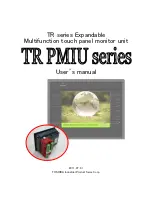
15
© 2011-2013 Silfab Ontario Inc. - Specifications in this manual are subject to revisions without notice
SAFETY AND INSTALLATION MANUAL FOR
PHOTOVOLTAIC MODULES
9. PACKAGING, HANDLING AND
STORAGE OF MODULES
9a) Silfab's Packaging
SILFAB Ontario provides the SLA/SLG modules in
the most appropriate packaging, designed to
guarantee that the transportation and storage will
be in conditions of maximum safety and protection
until the time of installation. Each package
contains up to 35 modules, arranged in a
horizontal position with the glass facing
downwards (as shown in Fig. 6).
Transport the module in its original packaging
until installation. If transporting outside of the
original packaging is necessary, contact Silfab for
written approval in advance
.
Protect all parts of the module during transport
and installation from mechanical stresses.
Fig. 6: Module Packaging
The packaging consists of:
•
A maximum number of 35 SLA modules or
30 SLG modules
•
1 wooden pallet (Fig. 7)
•
4 plastic protective corner angles per
module (Max 140, Fig. 8)
•
Containment straps
•
1 waterproof cover
•
Transparent film for containment
Fig. 7: Wooden pallet Fig. 8: Protective corner
9b) How to Manage the Packaging
Each package has been designed to allow the
shipment and storage of modules in order to
maintain their integrity unchanged over time,
provided that the information and indications
supplied by SILFAB Ontario are closely observed
and followed. These indications are summarised
by a series of standard symbols posted in a visible
manner on each pallet. The list below illustrates
the meaning of each symbol:
DO NOT STACK: each pallet of modules is
packaged according to the maximum number of
modules stackable vertically, in order to avoid or
reduce mechanical stress or damage as a result of
the pressure exerted by the stacked modules.
Therefore, it is absolutely forbidden to stack a
pallet on top of another, both in the process of
shipment and storage of modules.
DO NOT EXPOSE TO ATMOSPHERIC AGENTS: each
pallet of modules is suitably dressed in a cap of
transparent plastic in order to avoid temporary
contact with generic water spray or atmospheric
agents. The plastic casing does not ensure the
protection of the modules in the case of prolonged
exposure to atmospheric agents. Similarly, in the
case of flooding, the pallet does not ensure the
maintenance of the mechanical properties of the
weight of the modules. For this reason it is
recommended to store the pallet in a place that is
sheltered and dry. In addition, as the the junction





































